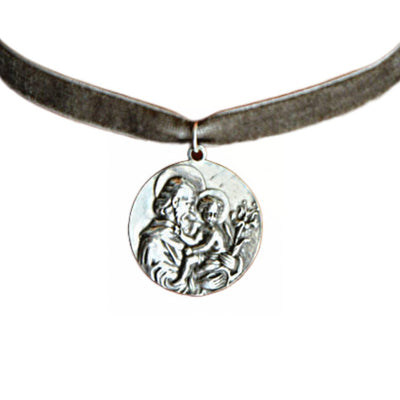Is it a sin to wear a rosary as a necklace?
ROME, 14 JUNE 2011 (ZENIT)
Answered by Legionary of Christ Father Edward McNamara, professor of liturgy at the Regina Apostolorum University.
Q: I have seen people wear the rosary as a necklace, and a fifth-grader asked me during CCD if that was a sin. I told her that I didn't believe it was a sin per se, but that as it is a wonderful prayer and most favored by the Blessed Mother, I thought it disrespectful, not very reverent (regardless of whether the rosary is blessed or not). The student promptly asked about my decade rosary bracelet, "What about wearing it like a bracelet?" In light of the cross and rosary "look-alikes" that seem to be ubiquitous these days in fashion jewelry, it's a good question. What do we tell young girls? — J.M., Leavenworth, Kansas
A: The closest resemblance to a norm on this topic is found in Canon 1171 of the Code of Canon Law. To wit: "Sacred objects, set aside for divine worship by dedication or blessing, are to be treated with reverence. They are not to be made over to secular or inappropriate use, even though they may belong to private persons."
This law does not fully apply to our case since it refers primarily to sacred objects for liturgical worship, such as chalices and vestments, rather than rosaries. However, the intimation to treat sacred objects with reverence and respect can be extended to rosaries, crosses, medals, and similar items.
Also, wearing a sacred object is not the same as using it in a secular or inappropriate manner. Many religious congregations wear the rosary as part of their habit, usually hanging it from a belt. There are also several historical cases of laypeople wearing the rosary for devotional purposes. For example, in his book "The Secret of the Rosary," St. Louis de Montfort illustrates the positive results of this practice in an episode from the life of King Alfonso VI of Galicia and Leon.
I think that the key to answering this question can be found in St. Paul: "So whether you eat or drink, or whatever you do, do everything for the glory of God" (1 Corinthians 10:31). In other words, there should be no indifferent or irrelevant actions in the life of a Christian.
If the reason for wearing a rosary is a statement of faith, a reminder to pray it, or some similar reason "to the glory of God," then there is nothing to object to. It would not be respectful to wear it merely as jewelry.
This latter point is essential when wearing a rosary around the neck. While it is not uncommon, it is not a typical Catholic practice.
Second, in recent times, specific controversial public figures have popularized wearing the rosary as a necklace, not precisely to "do all to the glory of God." In some parts of the United States and elsewhere, wearing rosary beads around the neck has become a gang-related identification badge.
Hence, while a Catholic may wear a rosary around the neck for a good purpose, they should consider whether the practice will be understood positively in the cultural context in which the person moves. If any misunderstanding is likely, it would be better to avoid the practice.
At the same time, as Catholics, we should presume the good intentions of the person wearing a rosary unless other external elements indicate otherwise.
Similar reasoning is observed regarding rosary bracelets and rings, although there is far less of a danger of confusion regarding their meaning. They are never mere jewelry but are worn as a sign of faith.
According to some sources, small, single-decade rosaries or chaplets were developed during persecution. They were quickly hidden and could be used without attracting unwanted attention.
They became popular among frontline Catholic soldiers, especially during World War I.
Using it for prayer is far more important than wearing a rosary in public. Then, it is genuinely done "to the glory of God."
This article has been selected from the ZENIT Daily Dispatch
© Innovative Media, Inc.
ZENIT International News Agency
Via della Stazione di Ottavia, 95
00165 Rome, Italy
www.zenit.org




















Leave a comment